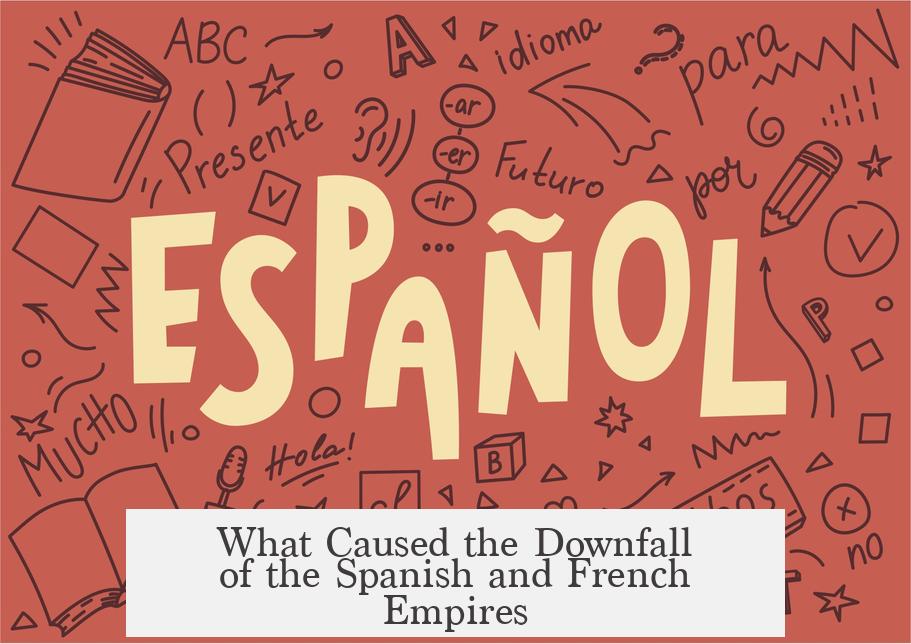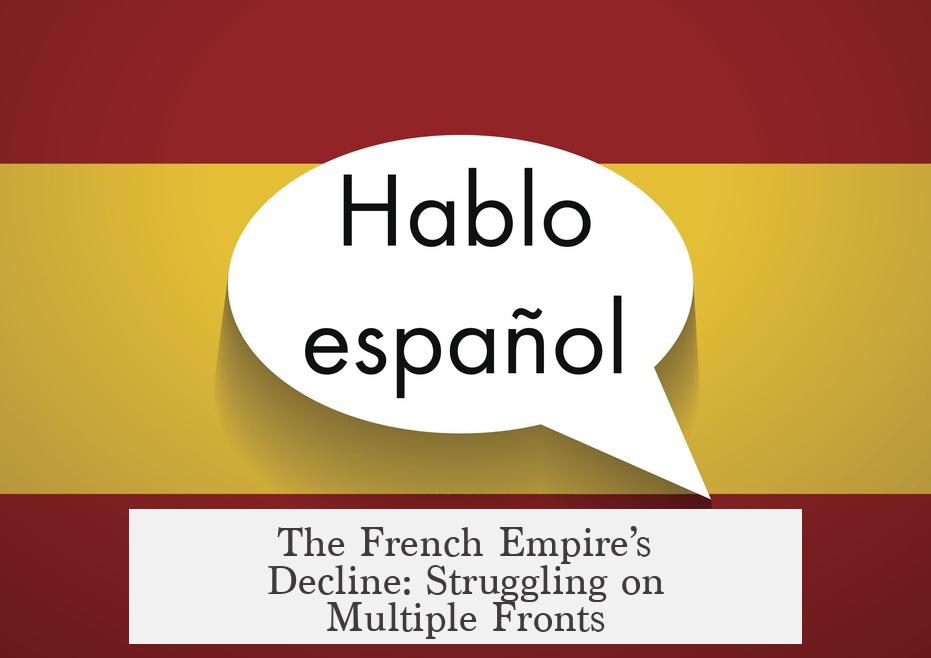The downfall of the Spanish and French empires resulted from a combination of military defeats, economic troubles, colonial revolts, and shifting global power balances. Both empires experienced critical losses at sea, struggled with leadership and economic management, and faced challenges from emerging powers and independence movements. These factors cumulatively led to their decline and ultimate collapse.
The Spanish Empire lost its naval supremacy after 1588, notably with the defeat of the Spanish Armada by the English. This loss weakened Spain’s ability to control its vast overseas territories, particularly in the Americas. The decisive Battle of Trafalgar in 1805 further dismantled Spain’s naval power, disrupting communication with distant colonies. This strategic isolation contributed to growing unrest in Spanish America.
- In the early 1800s, much of Spain’s colonial world revolted, inspired by the US and French Revolutions.
- The 19th-century independence wars in Latin America led to widespread liberation, leaving Cuba as one of Spain’s last American holdings.
- Later, the Spanish-American War of 1898 resulted in the United States seizing Spain’s remaining significant colonies.
Economic issues severely undermined Spain. The empire depended heavily on gold from its colonies, leading to rampant inflation. This wealth did not translate into sustainable economic development or diversification. Poor leadership compounded problems, especially after King Carlos III’s death, as ineffective autocrats failed to handle internal and external pressures.
The Napoleonic invasion of Spain intensified the empire’s decline. Napoleon deposed the Spanish king, placing his brother Joseph Bonaparte on the throne. The Spanish population rejected this, sparking armed opposition. The colonies did not recognize Joseph’s rule, accelerating their drive for independence.
France’s downfall involved overextension in both military and colonial ambitions. In the 18th and 19th centuries, France struggled to maintain dominance on land and sea simultaneously. This dual confrontation with the British Royal Navy and Prussia strained French resources and finances.
The Seven Years’ War marked a significant decline for France, losing Quebec and India to Britain. Attempts to challenge the Royal Navy ended after the Battle of Trafalgar. Although Napoleon seized much of Europe, control of the sea remained elusive.
- Napoleon’s failed invasion of Russia drastically weakened France’s military and political power.
- The second French Empire collapsed after defeat by Prussians, leading to German unification.
- France lost key territories in the Americas, notably due to the Haitian Revolution, forcing the sale of Louisiana to the United States.
Post-World War II, France faced crippling economic strain and rising independence movements in its colonies, especially in Indochina and Algeria. France fought costly wars but ultimately could not maintain control.
The international environment also shifted against colonial empires. The 1941 Atlantic Charter voiced opposition to continued colonialism, encouraging decolonization aligned with US policy interests. Colonial economies impeded emerging free trade visions, further disincentivizing empire retention.
Military defeats played a pivotal role in France’s decline, similar to other 20th-century empires. The loss of battles and wars eroded French global influence and accelerated decolonization.
| Factor | Spanish Empire | French Empire |
|---|---|---|
| Naval Defeat | 1588 Armada, Trafalgar | Battle of Trafalgar |
| Colonial Revolts | Latin America independence wars | Haitian Revolution, Indochina, Algeria |
| Economic Issues | Inflation, poor management | War costs, economic strain post-WWII |
| Leadership | Poor autocratic rulers post-Carlos III | Military overreach, flawed strategies |
| External Intervention | US takeover after Spanish-American War | British and Prussian military challenges |
| Key Military Failures | Napoleonic invasion effects | Russia invasion, 1870 defeat by Prussia |
Both empires collapsed due to multifaceted pressures rather than a single cause. Military defeats, losing control of seas and colonies, economic mismanagement, and resistance from colonies all played decisive roles. The rise of other powers like Britain, Prussia, and the United States accelerated the loss of influence for both Spain and France. Each empire’s end reflects the shift from old colonial domination toward modern geopolitical structures.
- Spain lost naval power and faced widespread colonial revolts.
- Economic inflation and weak leadership weakened Spain internally.
- French overextension militarily and naval defeat sapped its strength.
- Colonial independence movements and post-WWII pressures ended French empire.
- Both empires succumbed to military defeats and loss of key territories.
What Caused the Downfall of the Spanish and French Empires?

The downfall of the Spanish and French empires boils down to a mix of military defeats, economic troubles, colonial revolts, and poor leadership—all wrapped up in a historical soap opera full of naval battles, invasions, and lost territories. But what exactly happened to these once-mighty empires? Let’s unravel the mysteries by looking at each empire’s unique trajectory.
The Spanish Empire’s Fall: A Tale of Lost Ships, Inflation, and Revolts

At first glance, Spain had it all: gold from the Americas, vast colonies, and a mighty fleet. Yet, these riches masked critical weaknesses. The Spanish Empire’s downfall kicks off most famously with the loss of naval supremacy to England in 1588. The Spanish Armada, intended to assert dominance over the seas, failed spectacularly against the English navy. Once that massive fleet was taken down, Spain’s maritime control slipped away. Without control of the seas, Spain couldn’t effectively communicate or supply its colonies. Fast forward to the 1805 Battle of Trafalgar, where Spain suffered another naval crushing defeat, sealing its fate as a naval power.
Imagine trying to run an empire when your ships can’t sail properly—Spain felt that pressure acutely. Losing naval supremacy also meant losing grip on overseas territories prone to rebellion. Inspired by the American and French revolutions, many Spanish colonies in the Americas saw their chance and rebelled during the early 19th century. Wars of independence engulfed Latin America and undermined Spain’s sprawling colonial empire, except Cuba, which clung on longer thanks to its strategic position and loyalist factions.
Meanwhile, economic problems compounded the crisis. The golden age of wealth quickly became an inflation nightmare. The influx of gold led to rampant inflation, ruining Spain’s economy. To make matters worse, Spain failed to diversify its economy, fixating on luxury and fine goods rather than sustainable growth. This economic mismanagement starved both the homeland and the colonies.
Leadership didn’t help. After King Carlos III’s death, the empire’s rulers became increasingly incompetent. They maintained an autocratic system that, under weak rulers, turned into a recipe for decay. The ill-fated Napoleonic invasion in the early 1800s added insult to injury—Napoleon ousted the Spanish king, installed his brother Joseph, and ignited widespread armed resistance. Spanish America didn’t recognize Joseph’s authority, further fueling independence movements.
Finally, the 1898 Spanish-American War was the empire’s death knell. The United States intervened and swiftly grabbed what remained of Spain’s overseas holdings. By the end of the 19th century, Spain was left with barely a colonial footprint—except Equatorial Guinea. The once-mighty Spanish empire was reduced to a shadow of its former self.
The French Empire’s Decline: Struggling on Multiple Fronts

The French story isn’t as much about slow decay as it is about stretching too thin and losing key battles. In the 18th and 19th centuries, France aimed to master both land and sea, a difficult balancing act that drained resources. They faced stiff competition from Britain’s Royal Navy and Prussia’s army. While Britain honed its naval supremacy and Prussia built a skilled land force, France tried to do both but ended up outmatched—especially after the Seven Years’ War.
That war was a major blow. France lost Quebec and was pushed out of India—both vital colonial possessions—while fighting the British navy and the Prussian army simultaneously. This two-front struggle didn’t just cost territories; it crippled France’s economy and set political turmoil in motion that contributed to the French Revolution.
The naval defeats continued. Trafalgar was a turning point after which France abandoned dreams of sea dominance. Even Napoleon, brilliant on land, couldn’t overcome British naval strength. His Egyptian campaign illustrates this well—he crushed armies but got stranded after the Battle of the Nile.
Napoleon’s invasion of Russia was the final disaster, devastating his army and accelerating the empire’s collapse. The Second French Empire, led by Napoleon’s nephew, ended when he was defeated by Prussian forces in 1870, setting the stage for German unification. This defeat was a stark reminder that battlefield losses spell doom for empires.
France’s colonial empire lingered after this, but World War II delivered a killing economic and political blow. Post-war realities forced France to face costly independence wars in Indochina and Algeria. These colonial conflicts drained resources and morale. France had to accept the new geopolitical order shaped by the Atlantic Charter, which opposed colonial empires. Colonial economies also clashed with the post-war push for free trade led by the United States.
A crucial earlier loss was Haiti. The Haitian slave uprising in the late 18th century destroyed France’s strongest foothold in the Americas, prompting France to sell Louisiana to the United States. This sale drastically reduced France’s influence in the Western Hemisphere.
By the mid-20th century, France simply couldn’t maintain its far-flung empire. Wars of independence became inevitable and France retreated from most colonies. The Suez Crisis of 1956 symbolized the waning influence of former colonial powers.
Comparing Their Falls: Lessons in Empire Building and Collapse

So, what lessons emerge from Spain and France’s imperial downfalls? Both empires suffered from a mixture of military defeats on seas and battlefields, economic missteps, and failure to adapt to revolutionary ideas spreading globally.
- Naval Power Is Key: Spain’s Armada failure and France’s Trafalgar defeat highlight how losing control of the seas topples empires.
- Economic Fragility is Fatal: Spain’s inflation and rigid economy contrast with France’s war-driven financial drain—both spelled trouble.
- Colonial Revolts Show Limits of Authority: Inspired by revolutionary ideals, colonies in both empires demanded freedom, demonstrating that control through force only lasts so long.
- Poor or Overstretched Leadership: Spain’s weak autocrats and France’s attempt at being “jack of all trades” military-wise exposed vulnerabilities.
- External Interventions Accelerate Decline: US involvement in Spain’s last colonies and Britain’s militaristic pressure on France sped up their falls.
Would the outcomes have been different if either had focused more on sustainable governance and less on overextension? Perhaps history would tell a less dramatic tale. But the combined weight of military, economic, and political failures made the downfall of these empires inevitable.
Final Thoughts: Empires Rise, But Can They Stay?
Empires lavish with gold and armies don’t last forever. The stories of Spain and France teach us that empires need not just riches, but smart strategy, good governance, and adaptability. Naval battles and colonial uprisings aren’t just historic events; they illustrate the perennial challenges of managing vast territories and diverse peoples under one flag.
Today, these empires are studied not just for their grandeur, but for their cautionary tales. How might current powers avoid similar fates? The answer lies in learning from history: balance ambitions, invest wisely, and respect the will of the governed. After all, no empire enjoys eternal supremacy—unless you’re ruling a galactic empire in a sci-fi saga.




